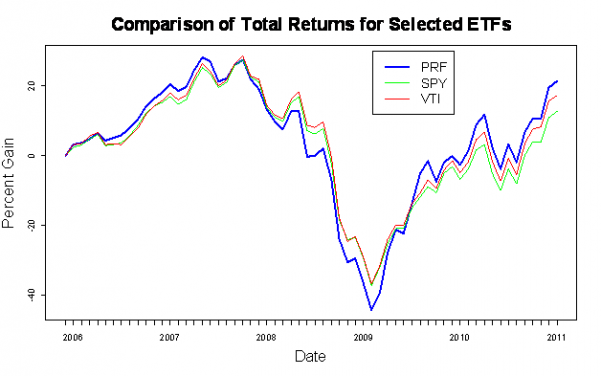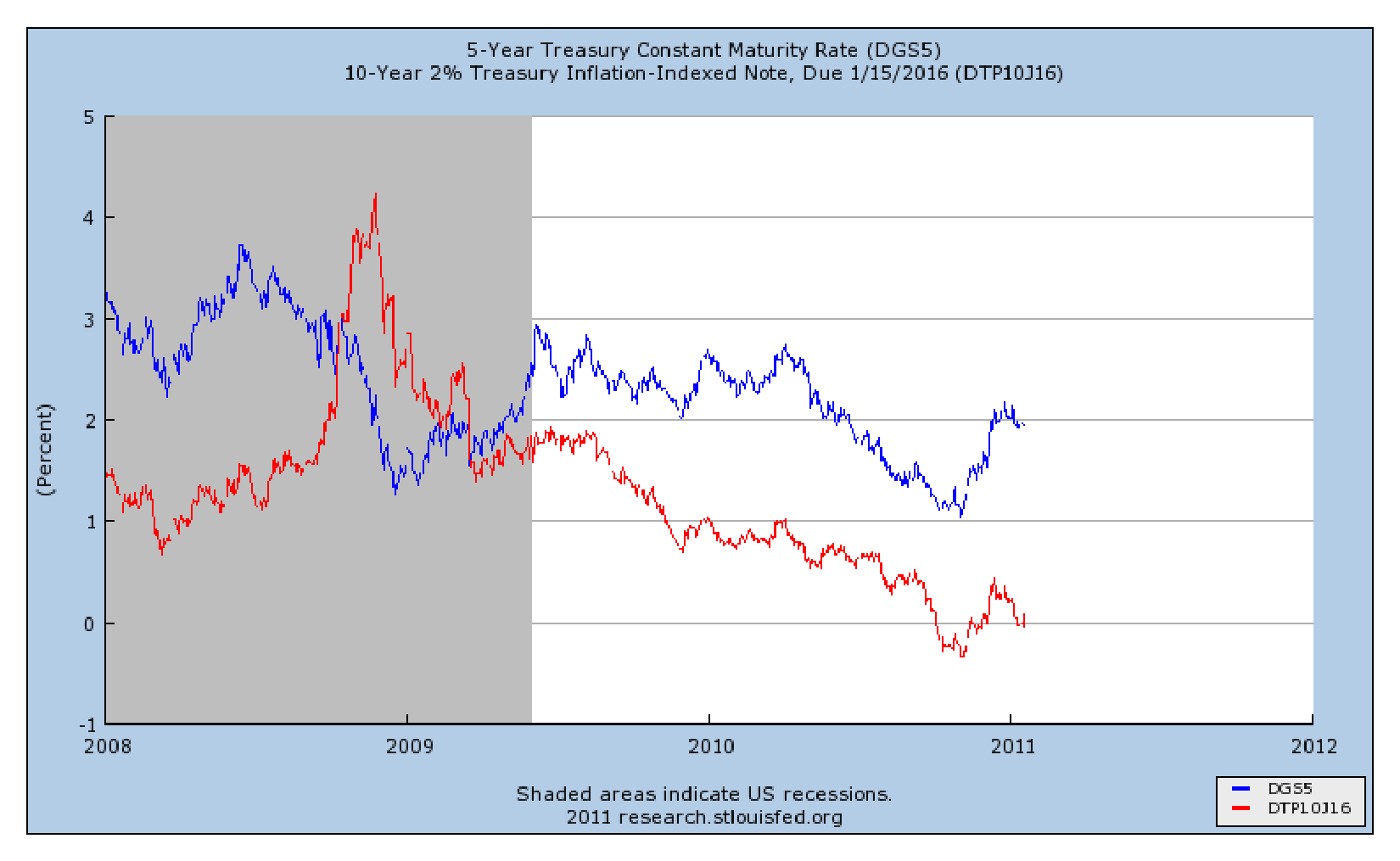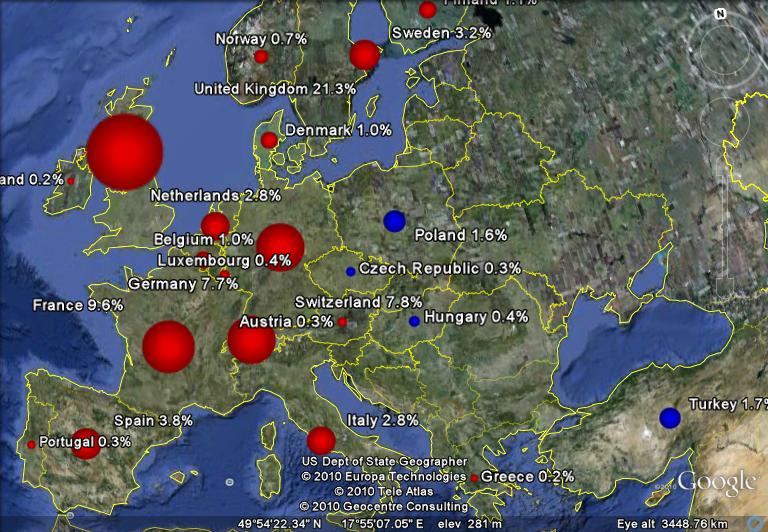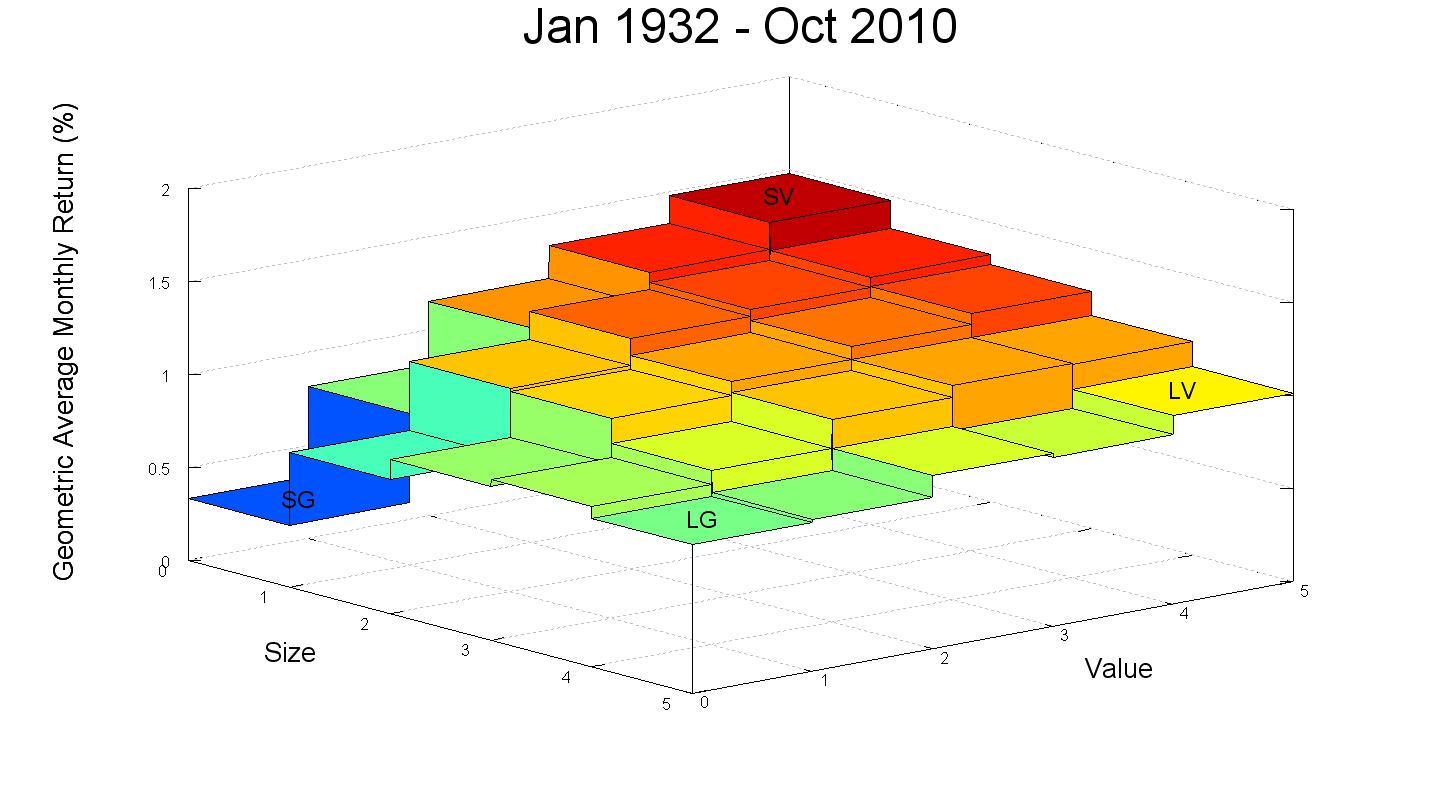So far, so good, but the debate is not over…and may not be for a while
In late 2005, PowerShares launched an ETF (ticker symbol: PRF) based on a controversial new “index” known as the Research Affiliates Fundamental 1000 Index (RAFI 1000). We now have over 5 years of return data for this fund, and this seems to me to be enough data for us to take a preliminary look at the strategy’s performance.
A quick comparison of PRF against popular traditional index funds such as SPY and VTI is shown below. This plot shows total returns (including dividends).
This graph shows that PRF has outperformed both SPY and VTI over the past 5 years, but it also experienced a larger drop during the crisis of 2008 and 2009. To properly evaluate the performance of PRF, we need adjust the returns for risk using an asset pricing model such as the Fama-French Three Factor Model (FF3F). However, before I get to the detailed analysis, I’d like to review what Fundamental Indexing is and why it is controversial.




